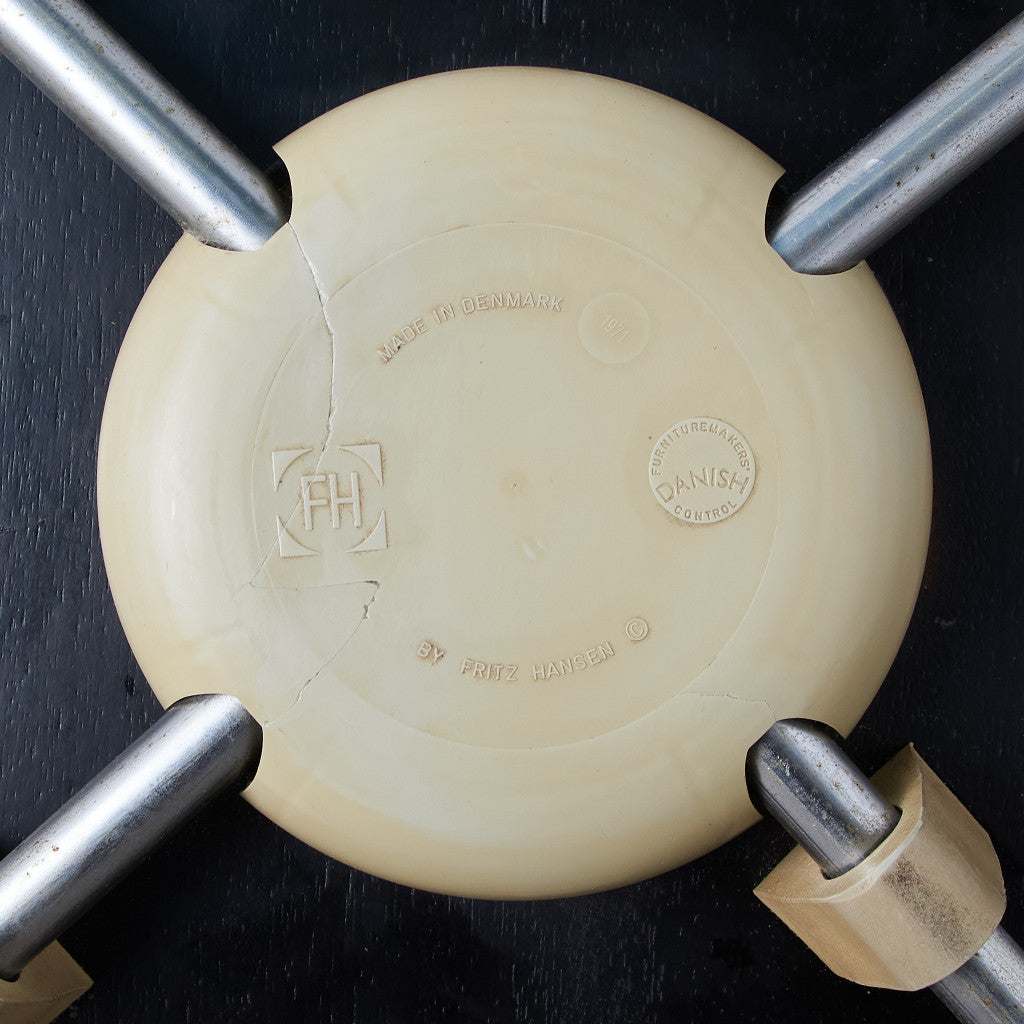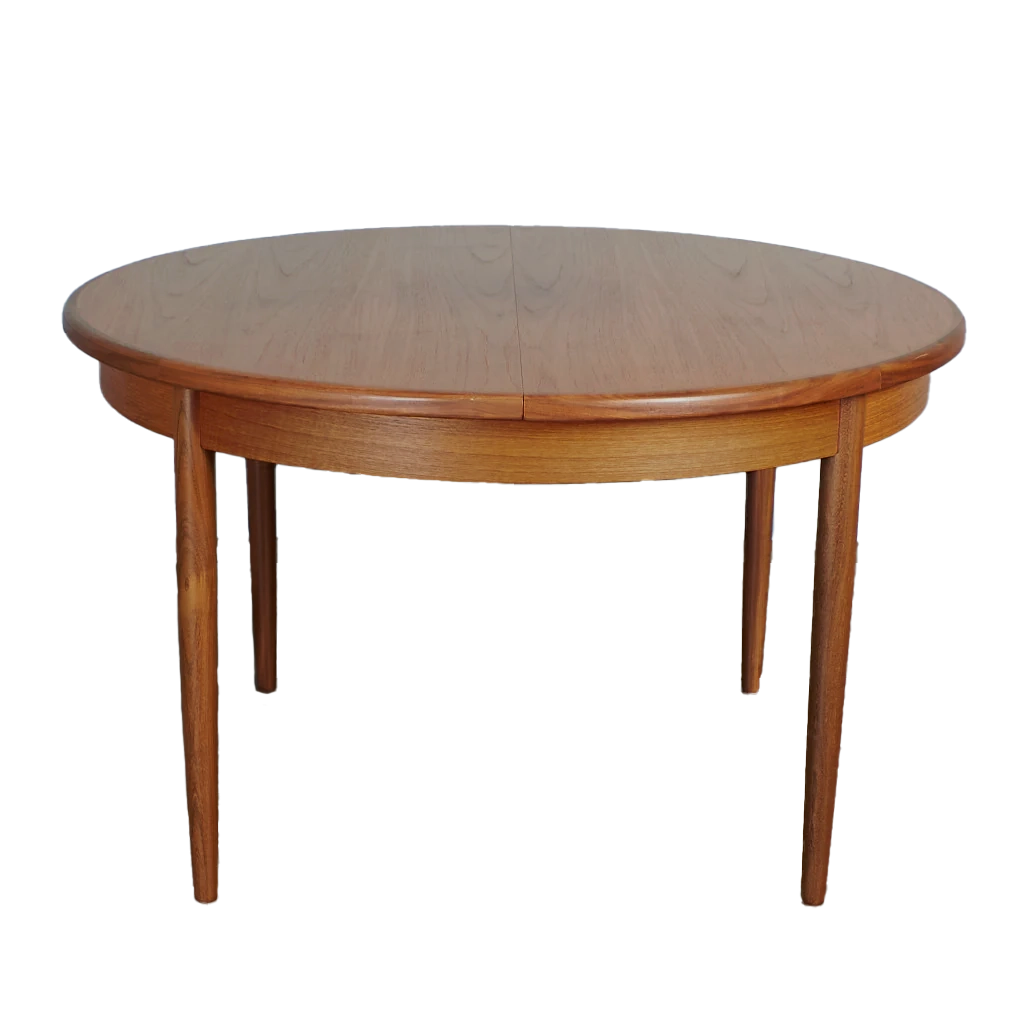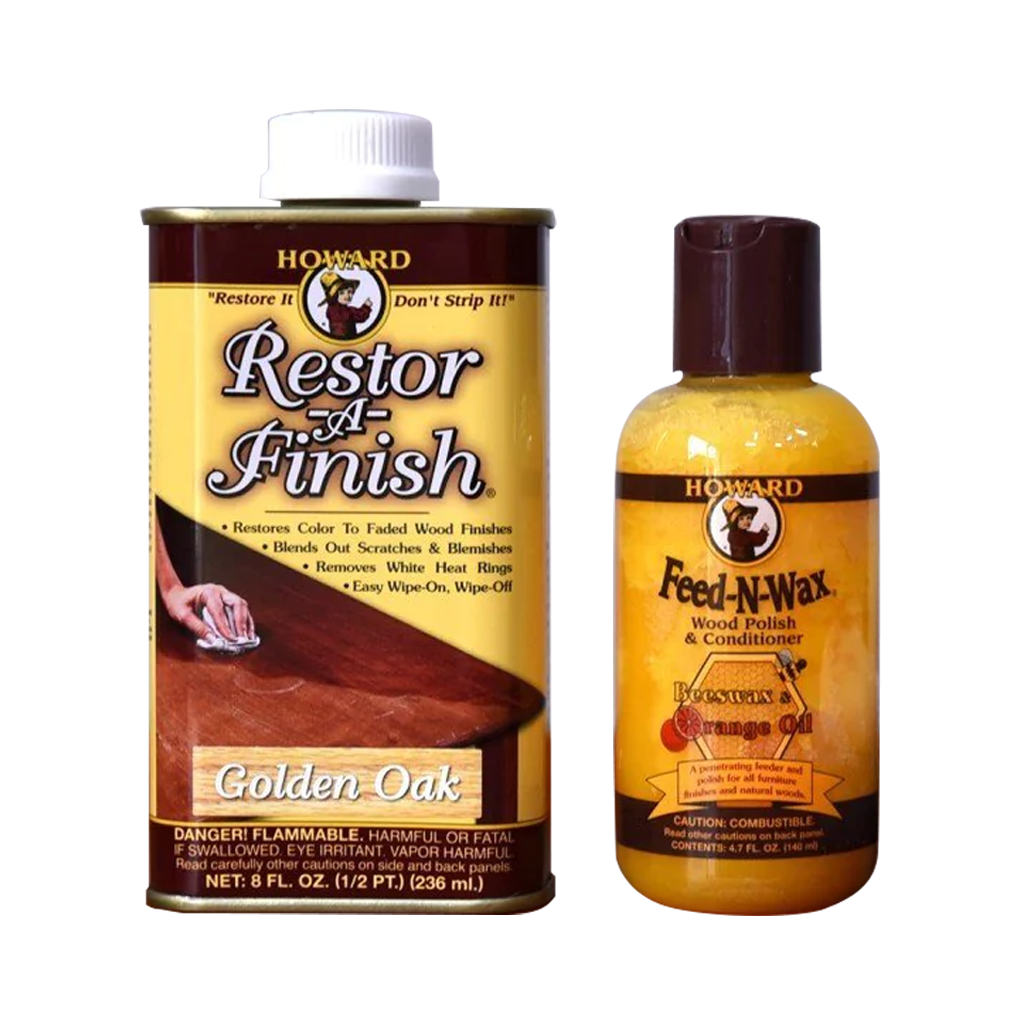






























ブランド
- Fritz Hansen
A Danish brand that is an icon of Scandinavian modern design and has produced many masterpieces. Fritz Hansen, a young furniture craftsman at the age of 25, founded a furniture parts manufacturer in Copenhagen in 1872. In 1885, he established an original furniture manufacturing company, and two years later, he opened a manufacturing facility in the center of Copenhagen. With his reliable technology, he gained a reputation as a high-quality manufacturer. In 1899, Fritz Hansen's son and successor, Christian E. Hansen, took over the business. Around this time, he became involved in important projects, and worked on furniture for large-scale buildings such as Christiansborg Castle, the Danish Parliament Building, and Copenhagen City Hall. In the 1920s, he actively introduced new materials and new production techniques. As the company grew into an industrial manufacturer, Christian E. Hansen began experimenting with steam-bent beech wood. The technique of bending wood, which continued to evolve, was established in the 1930s, and Fritz Hansen became a world leader in this field. From this period, Fritz Hansen began to produce furniture in collaboration with talented and up-and-coming designers and architects. The fusion of leading designers such as Arne Jacobsen, Paul Kjaerholm, Hans J. Wegner, and Vico Magistretti with Fritz Hansen's innovative technology and high craftsmanship left behind many historical masterpieces. In particular, the molded plywood chair Ant Chair, designed by Arne Jacobsen and released in 1952, and the Egg Chair and Swan Chair, released in 1958, became the most successful works in the history of Danish furniture, greatly increasing the value of Scandinavian furniture. Fritz Hansen is a pioneer of today's industrialized manufacturing methods and is also known for the precision of its manufacturing techniques. It is an indispensable presence in the history of furniture, and is a big brand that continues to be loved even today.
デザイナー
- Arne Emil Jacobsen (1902-1971)
Jacobsen is one of the leading figures in the modern style, an architect and designer who produced many best-sellers. He is known as the father of Danish design. He was born in Copenhagen, the capital of Denmark, in 1902. He initially wanted to be a painter, but his father opposed his dream, so he left home in 1921. He then pursued architecture, entering the Royal Danish Academy of Fine Arts in 1924. While studying there, he participated in the design of chairs exhibited at the Danish Pavilion at the Paris World's Fair under Kaj Fisker in 1925. After graduating in 1927, he joined the office of Paul Holsey. In 1929, he and his friend Fleming Lassen presented a modernist-style "House of the Future" which won a design competition and attracted attention. In the same year, he established an office and worked on a variety of buildings, but in 1940, when Denmark was occupied by Nazi Germany, Jacobsen, who was Jewish, fled to Sweden to escape persecution. After the war, he returned to Denmark and resumed his work as an architectural designer. In the 1950s, he began designing furniture, releasing a series of pieces such as the Ant Chair, Seven Chair, Egg Chair, and Swan Chair, becoming a world-famous designer. In particular, the Seven Chair, released in 1955 as a successor to the highly acclaimed Ant Chair, is Jacobsen's masterpiece, and many were produced after his death, and it still has many fans today. He created many masterpieces that are free of unnecessary decoration and pursue simple, easy-to-use functional beauty, and has received many awards in Europe and the United States. In addition, the clocks designed by Jacobsen, like the Seven Chair, still have many fans today. His designs were not limited to architecture and furniture, but also included textiles, tableware, and lighting. He taught at the Royal Danish Academy of Fine Arts and Oxford University, and was active until his later years, including the architecture of the National Bank of Denmark, which is said to be his greatest masterpiece in his later years and is his posthumous work.
Notice
Please check before ordering
- Notes for all items
-
- Installation, assembly, wiring, etc. of the product must be done by the customer.
- Parts and manuals are not included in the product, unless otherwise indicated in the text or photos.
- Please contact us if you cannot see the detailed product images. We do not accept returns even if you do not see the pictures.
- We do not guarantee the quality of the product.
- We do not accept returns, exchanges, or repairs other than the initial defect of the product after 8 days have passed from the date of delivery.
- Cautions for used products
-
- Please confirm with the customer regarding missing parts, manufacturer's options, etc.
- Please check with the customer regarding missing parts and manufacturer's optional items.
- Please be aware that the smell of used furniture may vary depending on the individual.
- We may not be able to respond to modifications or repairs made by the previous owner, damage that cannot be seen by normal handling, or unexpected age-related deterioration.
- Please note that most used items are one-of-a-kind. In the event of shipping accidents or defects, we will not be able to provide replacements.
- Handling of Vintage and Antique Items
-
- The paint is weaker than that of modern furniture, and there is a possibility of ring staining, color fading, or color migration.
- The paint is less strong than modern furniture and may shrink depending on the temperature and humidity in the place of installation or during transportation.
- The furniture is mainly oiled or lacquered, so please refrain from wiping it with alcohol.
- The furniture is shipped with a coating of maintenance oil, which will turn the furniture brown when wiped with water.
 テーブル
テーブル チェア
チェア サイドボード
サイドボード デスク
デスク ブックケース
ブックケース チェスト
チェスト ウォールユニット
ウォールユニット その他家具
その他家具 雑貨
雑貨 メンテナンス
メンテナンス









































